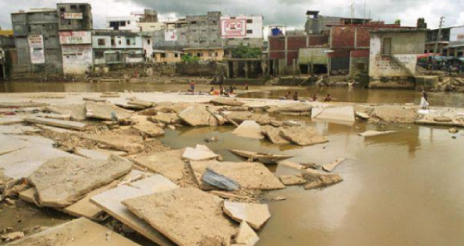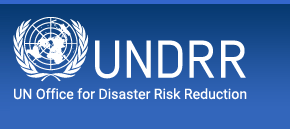- Our Mandate
- Mission and Objectives
- UNDRR in the UN
- Work Programme & Annual Reports
- Results Based System
- Work Partnerships
- Headquarters - Geneva
- SG-UN representatives for DRR
- Regional Office – The Americas and the Caribbean
- Head of the Regional Office – The Americas and the Caribbean
- What is Disaster Risk Reduction?
- What is the International Strategy?
- History of UNDRR
Anticipating climatic variations during "El Niño": a strategy for disaster risk reduction in Peru
 El Niño Phenomenon. Photo credit: El Comercio (www.elcomercio.pe)
El Niño Phenomenon. Photo credit: El Comercio (www.elcomercio.pe)
By: UNDRR – The Americas
LIMA, Peru, 23 September 2016 - The implementation of the El Niño Contingency Plan 2015, coupled with the moderate intensity of the phenomenon - which occurred approximately between February 2015 and May 2016 and registered at least 20 deaths and about 8,700 victims – represented a significant reduction of human and economic losses in Peru as compared to the "Meganiños" of 1982/83 and 1997/98, which killed more than 9,300 people and resulted in estimated losses equivalent to 11.6% and 6.2%, respectively, of annual GDP.
Peru is one of the 20 most vulnerable countries to climate change due to its location in a zone of tropical mountains and great ecosystem diversity. High temperatures, drought, frost and abundant rainfall have affected the country's economy and led to serious human and material losses, as well as the displacement of communities. Given these complications, the Peruvian State has developed a series of national policies and plans that include an environmental and climate perspective.
In recent years, the Peruvian government has been responsible for designing and implementing new governance measures that integrate climate and environmental prevention in development policies. Of particular importance are the Contingency Plan and the National Disaster Risk Management Plan PLANAGERD 2014-2021; which establishes lines of action against possible climate threats and sets general guidelines for disaster risk management.
“Contingency plans are formulated in advance of the occurrence of the hazard, as the tools that make it possible to carry out actions prior to the event, in order to mitigate harmful effects," said a spokesperson for the Secretariat of Civil Defence and Disaster Risk Management of Peru. As such, since 2014, the Peruvian government and communities have made a series of efforts to clean roofs, build retaining walls and identify poor housing. For its part, the Ministry of Education assured delivery of 2,000 prefabricated classrooms in emergency regions in 2015 and 2016, and implemented changes in the school day to make it possible to ensure effective school hours.
For the National Meteorology and Hydrology Service of Peru -SENHAMI-, including weather conditions as study variables in decision-making in social, political and economic areas implies understanding, anticipating and adapting to climate variability, in order to leverage their strengths in the event of possible disasters. To this end, the National Disaster Risk Management System of Peru (SINAGERD) has made an effort to strengthen and disseminate knowledge related to the behaviour of weather and climate; while the SENHAMI, has spearheaded a strategy to generate and manage knowledge on El Niño.
El Nino is without doubt one of the main natural hazards in Peru, but “not all weather anomalies that occur during El Niño are attributable to the phenomenon, as they may be part of other forms of natural variability,” said a spokesperson for SENHAMI. The phenomenon mainly affects the north, while frost, landslides and floods are common in the mountainous southern areas. Therefore, projects and policies are coordinated to respond and prevent various threats to the entire Peruvian territory.
"Climate change is not just an environmental issue, it is a fundamental economic issue and needs financial solutions," said the UN’s former climate chief Christiana Figueres. Thus, the Peruvian government has strived to provide appropriate advice to the productive sectors and strengthen the responsiveness of the country against the risks associated with climate variability. In addition to the initiatives mentioned, there are actions to build resilient communities to strengthen their capacity to respond to disasters, reduce risk conditions and adapt to climate change.
Policies and projects in Peru, with an environmental and climate perspective, are aligned with the four priorities of the Sendai Framework and include a joint effort by government agencies, the scientific community and the public to promote understanding of risk and strengthen resilience in communities. These efforts are expected to allow adaptation and preparedness to natural hazards. “The Andean countries are demonstration centres to evaluate the application of technologies and methods to prevent, mitigate and adapt to the different aspects of this phenomenon, which has been accelerated and intensified by human activity,” explained the General Secretariat of the Andean Community referring to climate change.
Related Links
General Secretariat of the Andean Community
Follow the UNDRR news online:
 Now we have twitter account @UNDRR Américas y el Caribe
Now we have twitter account @UNDRR Américas y el Caribe
JOIN US!
Tweets por el @UNDRR Américas y el Caribe
